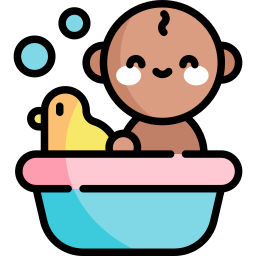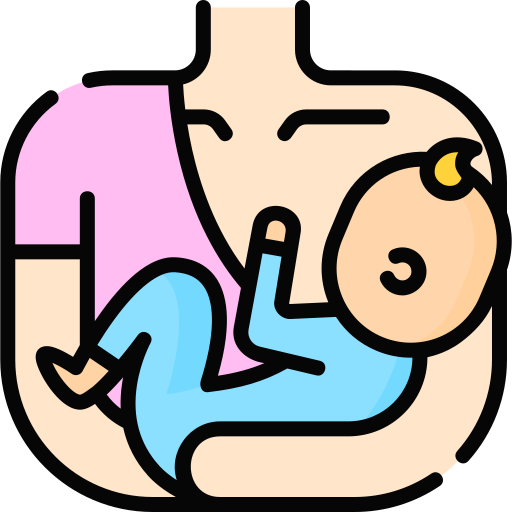As a new parent, the first fever your baby goes through can cause panic. You want to make them comfortable, do everything you can to bring their fever down, and ensure they feel well soon.
Remember, most fevers babies go through don’t cause harm and go away within a week.
However, many new parents make the mistake of overdressing their babies during a fever. Avoid this at all costs, and know how to dress your baby properly. Here is what you must do.
Key Notes
- Avoid dressing your baby with heavy materials
- Keep the temperature of the room comfortable and circulate the air
- Practice overall fever management guidelines to keep their symptoms under control
- Call the doctor when the symptoms are not manageable, and you have to seek emergency care
How To Dress Baby With Fever At Night: 5 Tips
The right practices will bring down the fever of your child and guarantee their comfort.
Here are some practices we recommend you follow:
1. Don’t Overdress
It can be tempting to put lots of clothing layers on your baby because you think they might feel cold or they have chills.
Even if they have these chills, you should still not overdress your baby. Doing this can shoot the fever even higher.
Light layers are the way to go, and blankets should be kept away from the baby. It can help the fever to be better.
2. Check The Material
If you are using one layer to dress your child, make sure the material is also light. For example, organic cotton is an airy material that will guarantee your child feels comfortable.
It will also prevent chills as you dress them in cotton.
Make sure that you don’t cover their face or head. This is where most of our heat is trapped, and covering it can cause the heat to be trapped even further.
So, keep these areas uncovered.
3. Damp Cloth
Many parents use a damp cloth or wet socks to bring the baby’s fever down. If you plan on using this method, you should ensure that the cloth is not too cold as it can cause shivering in your baby.
A lot of people think this method helps bring the fever down.
However, that is not necessarily true. Damp clothes only work to make the child feel more comfortable during the fever.
They don’t feel as hot anymore or chilly anymore, which can cause the crying to subside for a while.
4. Opt For Onesies Of Pajamas
A suitable clothing option for a baby with a fever is a comfortable pajama or onesie. The key is to ensure that they fit loosely on your baby.
You have to let the skin of the baby breathe so the trapped heat can find a way out.
There are many cotton pajamas and onesies in the market that you can easily find. For the best results, make sure that these fit loose on your baby.
5. Consider The Temperature Of The Room
Finally, whenever you dress the baby, the temperature of the room shouldn’t be too cold or hot. Instead, it should be at the right temperature to make your baby feel comfortable.
If you think the room is a little hot, then you can opt for a fan.
Circulating the air will also ensure that the room doesn’t feel suffocating to your baby. Even the temperature of the room will affect how they generally feel.
Manage The Fever With These Practices
Now that you know how to dress a baby with a fever at night, it is also important to follow other steps to manage the fever.
All of these guidelines will help them recover faster, which include the following:
The Use Of Fever Medicines Or Reducers
Fever medications such as Tylenol and ibuprofen are safe for babies from six months. However, this should not be your first option to manage the fever. Only opt for this method if your child’s fever is really bad, and they don’t feel good at all.
We also recommend that you consult the pediatrician before you give your baby any such medicine. They will also guide you with the dosage and let you know whether it is safe for your child. Remember, these medicines should be your last resort.
Hydrating Is Key
When babies experience a fever, they are quick to lose fluids, which means they can easily become dehydrated. As a result, their symptoms can worsen, and the fever might stay for longer. So, it is crucial that you keep your baby hydrated at all times.
You can opt for water, juices, or even broth to make sure they stay healthy. If you think your baby is experiencing dehydration, then you can opt for oral rehydration solutions.
These can guarantee that the child doesn’t feel worse off because of dehydration issues.
Don’t Use Old Remedies
Many people believe in outdated remedies that have been proven ineffective by science. These include things such as:
- Starving a fever
- Giving a cold bath
- Alcohol bath
- And more
Most parents thinking of giving their child a cold bath to reduce their symptoms.
However, if you do this, it can cause your baby to shiver even more and raise their body temperature.
If you want to give them a bath, we recommend that you use lukewarm water so that their fever remains manageable.
Call The Doctor When Needed
While you can do a lot of things to manage the fever and bring it down at home, there are times when you might need to consult a doctor.
If things get worse, you can also seek emergency care. Here are some scenarios where you might need to consult with the doctor:
- You have tried everything, but it is difficult to wake your child
- The age of your child is over six months, and they have a temperature of 102F or more for over two days
- If your baby is two months or less, and they have reached a temperature of 100F or more
- Their arms and legs are shaking
- Their eyes are rolling back, and they are having trouble breathing
- The age of your child is over two years, and they have a temperature of over 100F for more than three days
All of these are scenarios where you would have to seek emergency care and consult the doctor.
Don’t wait for anything else, and contact your child’s healthcare practitioner as soon as possible.
Final Words
Dressing your baby the right way can have a significant impact on their fever. Avoid heavy materials, don’t wrap them too tightly, and make sure they stay comfortable during this tough time.
When you follow all these practices, it will manage their symptoms much more easily.




























